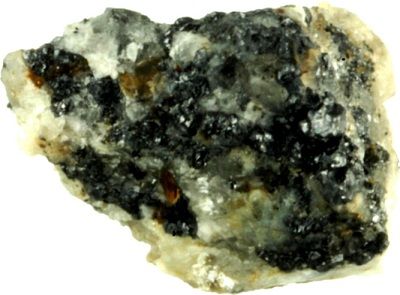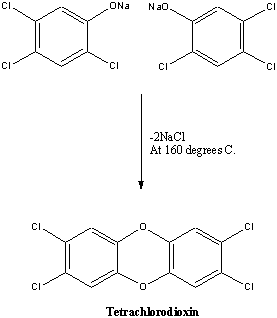 |
| "Hydrogen Bonding" The red atoms represent oxygen The yellow atoms represent hydrogen |
What are "hydrogen bonds"? "Hydrogen bonds" are an intermolecular force (a special case of covalent bonding) which are essential to basically all biological systems, and are formed when an atom contains a hydrogen bonded to a fluorine, oxygen, nitrogen, and sometimes chlorine. One can even argue that without "hydrogen bonding", many creatures would cease to exist! "Hydrogen bonding" explains many of the extraordinary properties of water such as its surface tension, ability to act as a universal solvent, cohesion, capillary action, and much more. As seen in the image on the right, the water molecules are sticking together, known as cohesion. The water molecules are polar, as the hydrogen is pseudo-positive and the oxygen is pseudo-negative, and each molecule is attracted to each other (the hydrogen of one is attracted to the oxygen of the other). This causes an incredibly strong "bond" to be formed, illustrated by the dotted line connecting the red (oxygen) and yellow (hydrogen) atoms together, known as "hydrogen bonding".
 |
| A property of a hydrogen bond, cohesion, is seen here. The water molecules are sticking together on top of this penny creating a dome-like shape. |
 |
| Neon Atom |
 |
| Boron Atom |
"Hydrogen bonds" are also responsible for the stabilization of large macromolecules such as proteins and nucleic acids, key for all living specimens. So as you can tell, "hydrogen bonds" are incredibly important, and an even stronger bond could create an even more versatile molecule! A symmetrical "hydrogen bond", seen below, is exactly what it sounds like: a molecule with symmetry (it can be any kind of symmetry) of hydrogen bonds. In prior posts, we have discussed how molecules which are symmetric are more stable. Stable molecules, contain strong bonds, so they are incredibly difficult to "separate". Just to make this a little more clear, I will give you an example. We can say that neon, a noble gas, has symmetry within its second energy level, while boron, does not. From this information, it would seem that neon should have a higher first ionization energy, the energy required to rip off an electron, because this atom wants to be stable and symmetric. So when we look up in a table and find that neon has a first ionization energy of 2081 kJ/mol and boron has one of 800.6 kJ/mol we are not surprised. Therefore, if a "hydrogen bond" is symmetric, it should require more energy to split it; thus, becoming stronger.
 |
| Symmetrical "Hydrogen Bond" |













